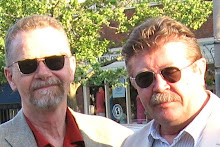
Pictured: Seana McKenna, Lucy Peacock
JOHN COULBOURN, Special to TorSun
03 JUNE 2013
R: 5/5
STRATFORD - History records that, although their stories are almost inextricably intertwined four centuries after their deaths, the ill-fated Mary, Queen of Scots, and her nemesis, Queen Elizabeth I of England, never actually met. And frankly, after watching the Stratford Festival’s production of MARY STUART that opened on the Tom Patterson stage on Friday, one is likely to feel that history is the poorer for it, for the two of them come together fictionally here in a way that echoes through the ages.
Part of that, of course, is credit to the play itself, a masterwork of the late 18th century, authored by Friedrich Schiller and almost flawlessly adapted for the modern stage in 2005 by Peter Oswald. Thanks to Oswald’s adaptation, it emerges as a compelling piece of contemporary theatre that offers touching human insight into the myriad ways power can corrupt those who seek it and wield it, even while it destroys those who lose it.
But playwright and adaptor can take only part of the credit for the triumph that is this production, for in bringing it to life, Antoni Cimolino (who also serves as the Fest’s artistic director), collaborates with an impressive design team led with understated elegance by Eo Sharp and a truly magnificent cast, led by Lucy Peacock as Mary and Seana McKenna as Elizabeth, to bring the script to riveting life.
The story starts in the final days of Mary’s life in England, held in close captivity by Amias Paulet (James Blendick) and convicted of conspiring to kill Elizabeth and claim her throne. But while Mary’s supporters, led by the Earl of Leicester (Geraint Wyn Davies) and the Earl of Shrewsbury (Brian Dennehy) conspire to win a reprieve for the beleaguered Scottish monarch, an opposing faction, led by Lord Burleigh (Ben Carlson) urge the grasping Tudor Queen to action, demanding the removal of a threat to the Tudor throne along with a Stuart head.
Not surprisingly, perhaps, Cimolino draws fine performances from his two principals and from seasoned actors like Carlson, Wyn Davies and a host of others, capturing all of these hugely talented players in a state of delicate balance that serves his story to near perfection. But the final measure of both this production’s strength and its excellence (and its director’s) can be taken finally in the way Cimolino takes less-seasoned performers like Christopher Prentice (as the zealot Drury) and Dylan Trowbridge (as the clerkish William Davison) and allows them to shine every bit as brightly as their more tempered cast mates.
At the same time, he takes others (best left nameless) who have been gnawing on scenery for so long they’ve been written off as theatrical beavers and returns them to the fold, demonstrating that they are still capable of touching, quality work. Finally, he ties it all up in an impressive elegant maze that serves to remind us all that politics is still a blood sport, in a production that most definitely puts the class back in classical theatre.



No comments:
Post a Comment